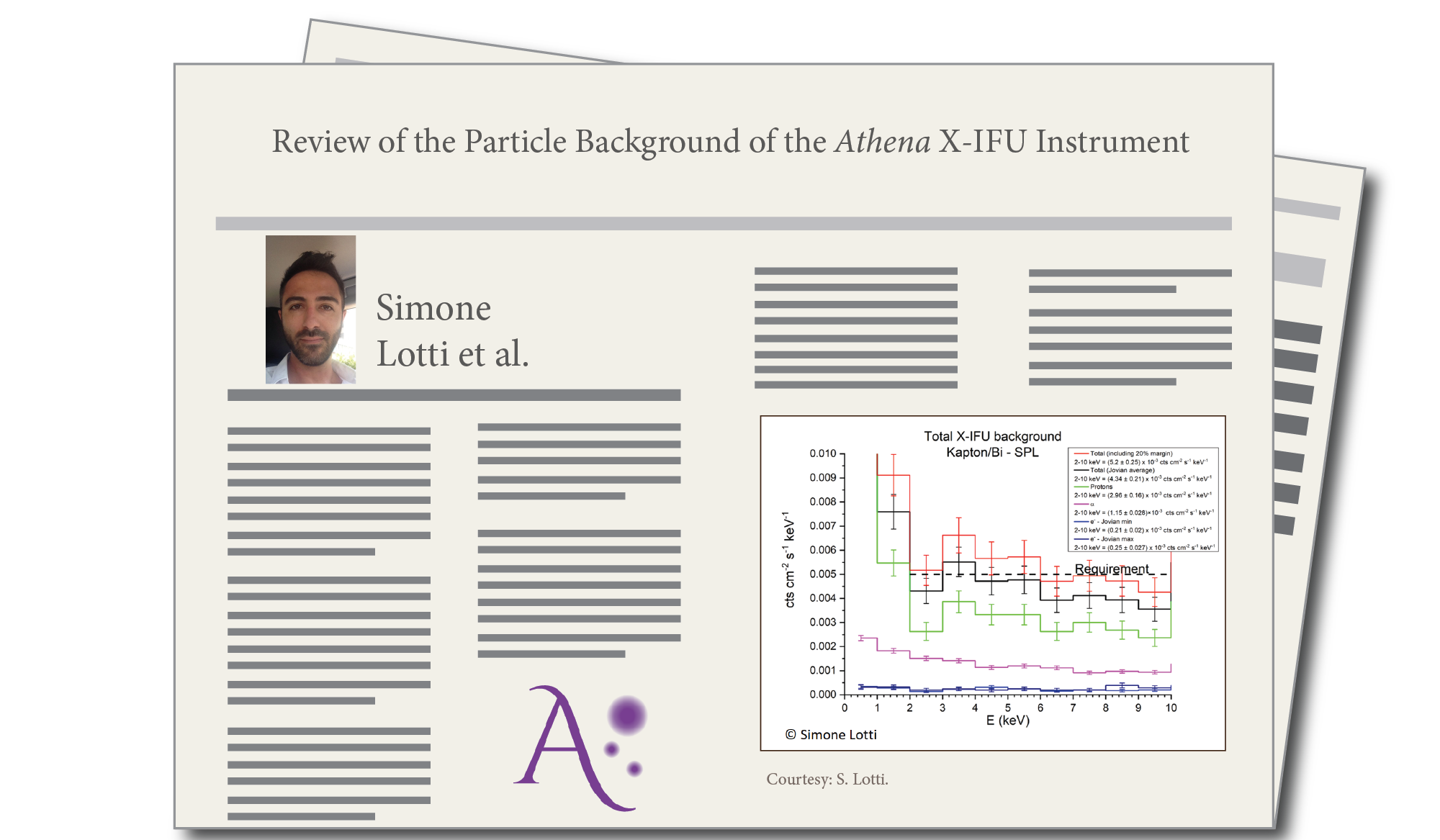
Review of the Particle Background of the Athena X-IFU Instrument

By Simone Lotti
The goal of this paper has been to provide the current expectation of the residual particle-induced background of the Athena microcalorimeter, in both its low (Soft Protons) and high (GCR) energy induced components, to assess the instrument capability to characterize background dominated sources such as the outskirts of clusters of galaxies. We adopted and compared the most up-to-date models for the L1 and L2 environments, and derive indications against the latter. We estimate the particle-induced background level on the X-IFU microcalorimeter with Monte Carlo simulations, before and after all the solutions adopted to reduce its level.
Concerning the GCR induced component, we found that using only the main detector array the X-IFU would exceed the background level requirement. For this reason, the X-IFU includes a cryogenic anticoincidence detector (CryoAC), that allows discriminating high energy particles that cross the detector, reducing the unrejected background to a level that is compliant with the mission requirement. Regarding the Soft Protons component, the analysis does not predict dramatically different backgrounds in the L1 and L2 orbits. However, the lack of data concerning the L2 environment labels it as very weakly characterizable, and thus we advise against its choice as the orbit for X-ray missions.
We then use these background levels (accounting for a 2% uncertainty on the particle component) to simulate the 100 ks observations of a typical galaxy cluster from its centre out to 1.2 R200 to probe the characterization capabilities of the instrument out to the outskirts. We find that without any background reduction it is not possible to characterize the properties of the cluster in the outer regions. We also find no improvement of the observations when carried out during the solar maximum with respect to the solar minimum conditions.

